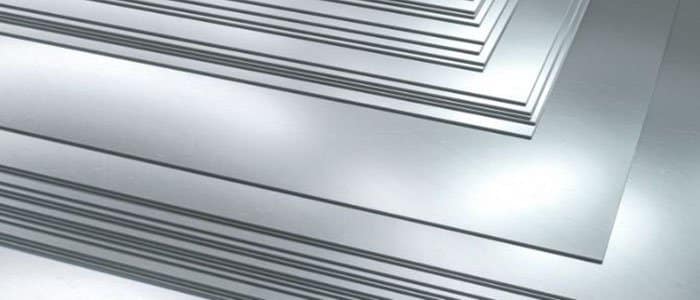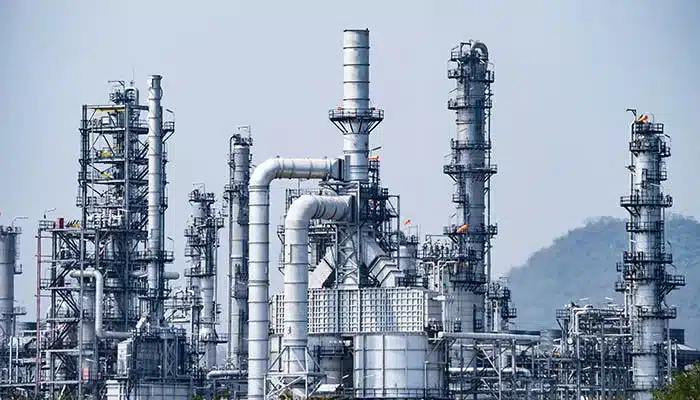When it comes to choosing stainless steel for projects like industrial parts and kitchen equipment, the discussion often focuses on two mainstream options: 410 stainless steel and 304 stainless steel. These two materials are widely used, but their areas of strength are very different. This guide will help you sort out the differences between these two materials from basic properties to application cases, so that you can make the choice that truly suits your needs.
The Basic properties of 410SS and 304SS
410 stainless steel belongs to the martensitic stainless steel family. Its core properties come from the combination of 11.5%-13.5% chromium content and 0.15%-0.45% carbon content. Chromium gives the steel basic corrosion resistance, while the high carbon content allows it to significantly increase its hardness through heat treatment (quenching + tempering) to 40-58 HRC, close to the level of high-end tool steel, suitable for manufacturing parts that require high wear resistance and high strength. However, the natural shortcoming of the martensitic structure is that it has limited corrosion resistance: it is prone to pitting or rust when exposed to salt water, acidic substances or humid environments for a long time. In addition, the magnetism of 410 stainless steel runs through all states (it is magnetic after annealing or hardening), which may limit its application in precision electronic instruments. In terms of processing, the heat treatment process of 410 stainless steel is complicated, requiring precise control of heating temperature (950-1050°C austenitization) and cooling speed (oil cooling or air cooling). Preheating (200-300°C) and post-weld heat treatment are required during welding to prevent cracking.
As a benchmark product of austenitic stainless steel, 304 stainless steel achieves a balance of corrosion resistance, processing performance and mechanical strength with a golden ratio of 18%-20% chromium and 8%-10.5% nickel. The addition of nickel significantly improves the acid and alkali resistance (especially to weak organic acids such as food acids and detergents), allowing the material to remain stable in an environment exposed to water, acid or salt. Its non-magnetic characteristics (in the annealed state) and excellent weldability (can be completed without preheating) further broaden its application range.
| Element | 410 Stainless Steel | 304 Stainless Steel |
| Chromium (Cr) | 11.5% – 13.5% | 18% – 20% |
| Carbon (C) | 0.15% – 0.45% | ≤0.08% |
| Nickel (Ni) | ≤0.6% | 8% – 10.5% |
| Manganese (Mn) | ≤1.0% | ≤2.0% |
| Silicon (Si) | ≤1.0% | ≤1.0% |
| Phosphorus (P) | ≤0.04% | ≤0.045% |
| Sulfur (S) | ≤0.03% | ≤0.03% |
| Iron (Fe) | Surplus | Surplus |
Differences in corrosion resistance
Let’s say you’re building a set of outdoor furniture. If you use 410 stainless steel, you’ll notice it starting to rust after a few rains—even if you apply anti-rust oil. That’s because the chromium content of 410 stainless steel can resist rust in dry environments, but the protection quickly collapses when faced with the continuous attack of water and oxygen (especially salt). Railings made of 304 stainless steel, on the other hand, can remain smooth for years in the same outdoor environment, and do not require frequent maintenance even in areas with salty fog at the seaside.
The key difference lies in the ability of both to resist “chloride ions”—the tiny salt and chemical particles that accelerate the rust process. 410 stainless steel can resist rust in fresh water or weak acid environments (such as dry kitchen knives), but once it comes into contact with salt water or industrial chemicals, it will pit and crevice corrosion. With its higher chromium and nickel content, 304 stainless steel forms a self-healing oxide film on the surface, which can quickly regenerate the protective layer even if scratched, making it particularly suitable for scenes with high hygiene requirements such as marine environments, chemical plants and even food processing equipment.
Hardness, Strength, and Wear Resistance
If your project requires something that can take a beating, 410 stainless steel’s hardness is a game-changer. Thanks to its martensitic structure, it can be heat-treated to reach hardness levels of 40–58 HRC (on the Rockwell scale), which is comparable to high-end tool steels. This makes it perfect for applications where wear resistance is critical, such as surgical instruments (think scalpels that need to stay sharp through hundreds of procedures), pump shafts that spin at high speeds, or valves that handle abrasive fluids.
304 stainless steel, while not as hard, excels in flexibility. Its austenitic structure makes it highly ductile, meaning it can be bent, stretched, or formed into complex shapes without cracking. This is why it’s the material of choice for architectural panels, kitchen appliances, and any application where the steel needs to withstand impacts or vibrations without breaking. However, this flexibility comes at a cost: 304 can’t match 410’s hardness, so it’s more prone to scratches, dents, and wear over time.
Heat Treatment and Welding: The Workshop Perspective
Let’s talk about what happens when you take these materials into the workshop. 410 stainless steel’s heat-treatability is both a blessing and a curse. On the one hand, it means you can harden it to achieve razor-sharp edges or extreme durability. On the other hand, the process is finicky: you need to heat it to 950–1050°C (1740–1920°F), quench it rapidly in oil or air, and then temper it at 200–750°C (390–1380°F) to balance hardness and toughness. Skip a step, and you’ll end up with a brittle part that cracks under stress.
Welding 410 stainless steel is even trickier. Because it’s prone to cracking during the cooling process, you’ll need to preheat it to 200–300°C (390–570°F) and follow up with post-weld heat treatment to relieve stress. The filler metals have to be carefully chosen (typically ER308L or ER309L) to avoid corrosion at the weld joints. This makes 410 a challenging material for hobbyists or small workshops without specialized equipment.
304 stainless steel, by contrast, is a dream to work with. It doesn’t require preheating or post-weld heat treatment, and it can be welded using standard TIG or MIG methods with ER308L filler. While it does work-harden during machining or forming (meaning it becomes slightly less ductile as you bend or cut it), this effect is much less pronounced than with 410.
Cost and Availability: The Budget Factor
Let’s be honest: cost is often the deciding factor in material selection. 410 stainless steel is generally cheaper than 304 because it contains less nickel (nickel prices fluctuate wildly and drive up material costs). This makes it an attractive option for high-volume projects where corrosion resistance isn’t the top priority, such as fasteners, bearings, or industrial valves.
304 stainless steel, with its higher nickel and chromium content, commands a premium price. But in many cases, that premium is justified by its longevity. A 304 stainless steel sink might cost 20% more upfront than a 410 stainless steel alternative, but it won’t rust or stain, reducing maintenance costs over time. Similarly, a 304 chemical tank might last twice as long as a 410 tank in a corrosive environment, offsetting the initial investment.
When to choose 410: If you’re working on a budget-constrained project and the environment is relatively dry or mildly corrosive (e.g., indoor machinery parts), 410 offers the best value.
When to splurge on 304: If your application involves exposure to moisture, chemicals, or food acids, the extra cost of 304 pays off in reduced maintenance and longer service life.
__________________________________________________________________________________________________
Daxun Alloy is a stainless steel supplier with many years of experience. We have sufficient stock of various grades of stainless steel. If your project requires it, please contact us immediately and we will give you the best quotation.
🔧 Explore Our Alloy Products




